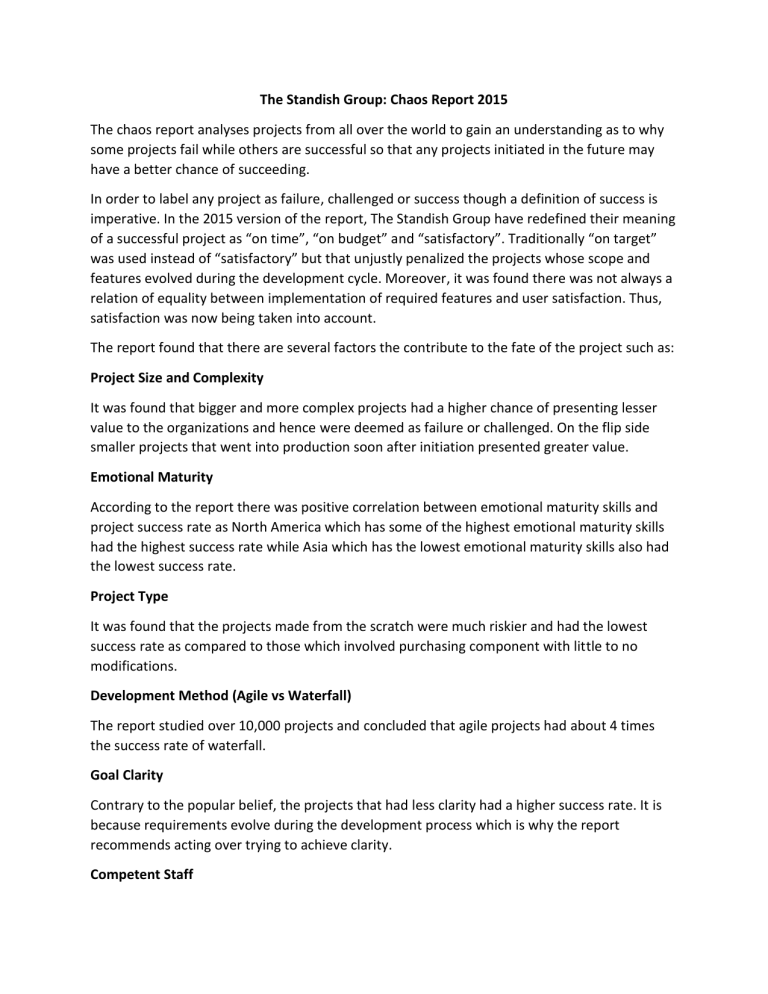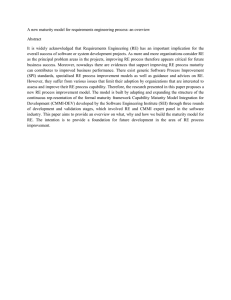
The Standish Group: Chaos Report 2015 The chaos report analyses projects from all over the world to gain an understanding as to why some projects fail while others are successful so that any projects initiated in the future may have a better chance of succeeding. In order to label any project as failure, challenged or success though a definition of success is imperative. In the 2015 version of the report, The Standish Group have redefined their meaning of a successful project as “on time”, “on budget” and “satisfactory”. Traditionally “on target” was used instead of “satisfactory” but that unjustly penalized the projects whose scope and features evolved during the development cycle. Moreover, it was found there was not always a relation of equality between implementation of required features and user satisfaction. Thus, satisfaction was now being taken into account. The report found that there are several factors the contribute to the fate of the project such as: Project Size and Complexity It was found that bigger and more complex projects had a higher chance of presenting lesser value to the organizations and hence were deemed as failure or challenged. On the flip side smaller projects that went into production soon after initiation presented greater value. Emotional Maturity According to the report there was positive correlation between emotional maturity skills and project success rate as North America which has some of the highest emotional maturity skills had the highest success rate while Asia which has the lowest emotional maturity skills also had the lowest success rate. Project Type It was found that the projects made from the scratch were much riskier and had the lowest success rate as compared to those which involved purchasing component with little to no modifications. Development Method (Agile vs Waterfall) The report studied over 10,000 projects and concluded that agile projects had about 4 times the success rate of waterfall. Goal Clarity Contrary to the popular belief, the projects that had less clarity had a higher success rate. It is because requirements evolve during the development process which is why the report recommends acting over trying to achieve clarity. Competent Staff Not surprisingly, smart and trained people are behind projects that succeed. So, it is important for an organization to hire competent people that have the skills required for the project and provide incentives to motivate them.


